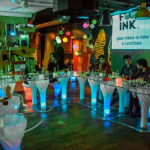While there are a few restaurants across the world that utilize 3D printers, they all operate differently. Now, Singapore institutions provide a crucial insight into such possible innovations and their impact on the industry. Many experts in the field are exploring options for “man-power lean” solutions for restaurants. One of those solutions is 3D Printing.
Michael Tan, CEO of Singapore Productivity Centre, thinks that this can help small and medium companies compete with the big dogs. Due to economies of scale bigger companies can out-price smaller ones. While 3D printing might incurs initial costs it can serve as a cost-saving measure in the long run. Moreover, it also presents a solution to excess waste.
While some critics insist that this will lead to worker displacement, Mr. Tan argues that this is not the case. He argues that, in fact, they free up workers for other tasks, making them more productive in the long run.
Food Printing Still Developing
Singapore’s educational institutions have a history of making innovations in culinary manufacturing. I has also seen a rise in programs catering to the possibilities of additive manufacturing. It is promising to see governments and planning institutions taking the future of 3D printing into account. It is an indicator that there is a trend towards wider adoption.
Food printing is still in the development stage, however. While certain restaurants use it as a gimmick, this is because it is still a niche idea in the eyes of many consumers. Consumers have also noted that there is a notable difference between printed food and artisanal, crafted food. The layer by layer nature has resulted in certain foods like cookies being “crumbly” in texture.
These present minor problems that the industry will have to overcome to kickstart wider adoption. Yet, 3D printed food seems inevitable at some point. It is a solution to so many problems in the restaurant industry. Problems such as wastage, storage, transport and labour. So far, new discussions, like those in Singapore, will yield some form of viable business model. Till then, food printing will have to be a niche curiosity.










